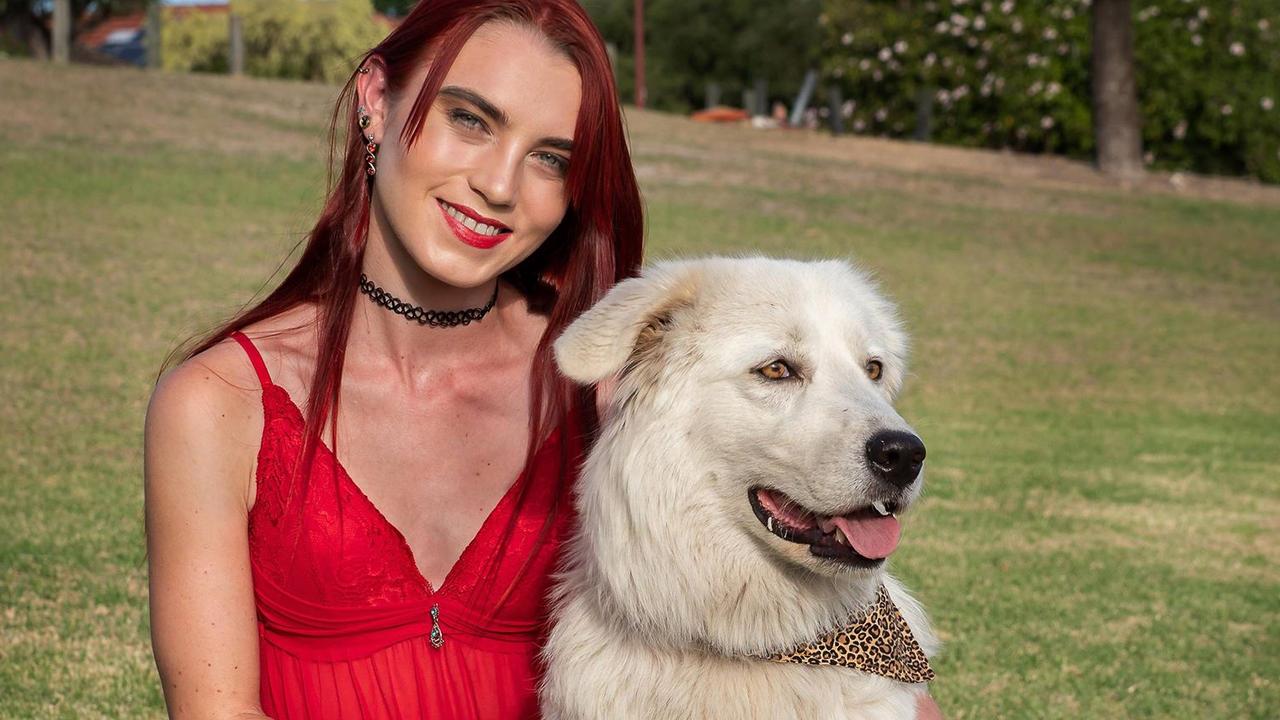Scientist Kit Prendergast names new native bee after pet dog Zephyr
Dr Kit Prendergast discovered a new species of native bee with a doglike snout, so she named it after her beloved pooch, Zephyr

READING LEVEL: GREEN
A scientist has named a new species of native bee she discovered in a city park after her beloved pet dog.
Dr Kit Prendergast discovered the bee species in Perth’s Kings Park and decided to name it after her dog, Zephyr, after noticing the bee had an unusual doglike snout.
Bees don’t have noses, they smell with their antennae*, so Dr Prendergast said she was “instantly intrigued* by the bee’s very unusual face”.
“When I went to identify it, I found it matched no described species, and I was sure that if it was a known species it would be quite easy to identify given how unusual it was in appearance,” she said.

Dr Prendergast, from the Curtin School of Molecular and Life Sciences, said she had always dreamt of discovering and describing a new species of native bee.
When someone discovers and officially and scientifically describes a new species, they also get the right to name it.
“You can name it after something descriptive, a location, or even a famous person or someone who is significant in your life – which is exactly what I did,” Dr Prendergast told the ABC.
The official name of the new bee species is Leioproctus Zephyr. The word Leioproctus identifies the new species as being part of a very large and varied group of native bees and Zephyr, of course, is the name of Dr Prendergast’s dog.
Dr Prendergast said she named the new bee after Zephyr because its face looked similar to a dog’s snout, but also because of the emotional support she got from her pet during her PhD* studies.
“She has been so important to my mental health and wellbeing during the challenging period of doing a PhD and beyond,” Dr Prendergast said.

She said the bees’ snouts probably helped them reach the nectar and pollen in the two species of plants they foraged* on in the urban bushland where they were discovered. These plants had unusual petals that had to be pushed out of the way for the bees to reach the nectar and pollen.

Dr Prendergast said the discovery of the new species highlighted the importance of conserving* urban* habitats* and planting native flowers.
She said her research, published in the Journal of Hymenoptera* Research, had found the Leioproctus Zephyr in only five urban bushland locations in southwest Western Australia.
But her discovery meant they could now be protected.
GLOSSARY
- antennae: a pair of long organs on the head of insects that are used for senses like, touch, smell and taste
- intrigued: someone interested or curious
- PhD: stands for Doctor of Philosophy and is the highest level of study, requiring someone to produce significant new research
- foraged: found food by searching
- conserving: protecting, saving
- urban: in a town or city
- habitats: natural environments in which animals and/or plants live and grow
- Hymenoptera: a large order of insects that includes bees, wasps and ants. They have four transparent wings and females typically have a sting
EXTRA READING
Bees in ‘lockdown’ to stop parasite spread
Taxis jump queue to get queen bees to hives
Our insects are in big trouble
QUICK QUIZ
- What are the two reasons Dr Kit Prendergast named the new bee after her dog
- What is Dr Prendergast’s dog’s name?
- Which park was the new bee discovered in?
- If bees don’t have noses, what do they use to smell?
- What do the bees’ snouts probably help them to do?
LISTEN TO THIS STORY
CLASSROOM ACTIVITIES
1. Name it!
If you could choose the name for the new species of native bee, what would name would you choose and why? The only rule is that you are not allowed to name it after a pet and you have to write sentences explaining your choice.
Time: allow 10 minutes to complete this activity
Curriculum Links: English, Science
2. Extension
Why do you think Leioproctus Zephyr has never been discovered before? Write down all of the reasons that you can think of to explain why this species has only just been discovered.
Time: allow 15 minutes to complete this activity
Curriculum Links: English, Science
VCOP ACTIVITY
More than a pet
We can tell from Dr Prendergast’s actions and words, that she feels her dog, Zephyr, is more than just a pet to her.
Do you agree with Dr Prendergast? Do you have a pet in your life like Zephyr? Or do you wish you had?
Write a letter explaining whether you agree with the statement that animals are more than just pets.
If you have a pet, use your experiences with them to explain why you agree or disagree with this statement.
If you don’t have a pet, use your prior knowledge or what you have seen in the world around you.
Include both facts and opinions to persuade us to also follow your view on the topic.
Don’t forget your emotive and persuasive language. Use paragraphs to organise your thoughts and ideas, and read back over your work aloud before sharing with others.

